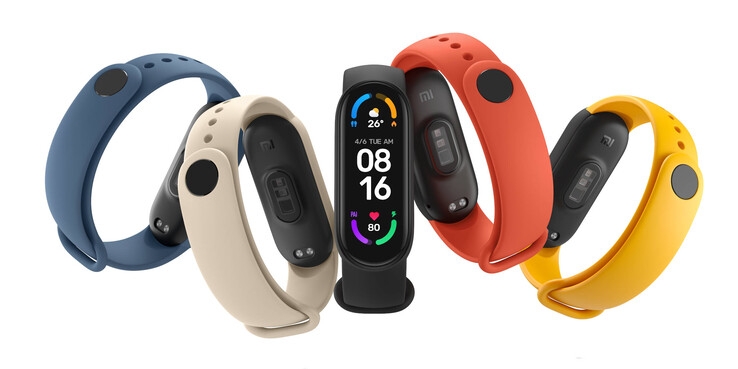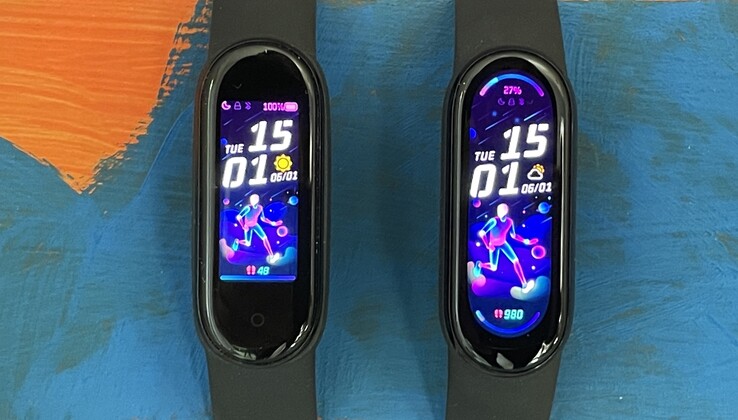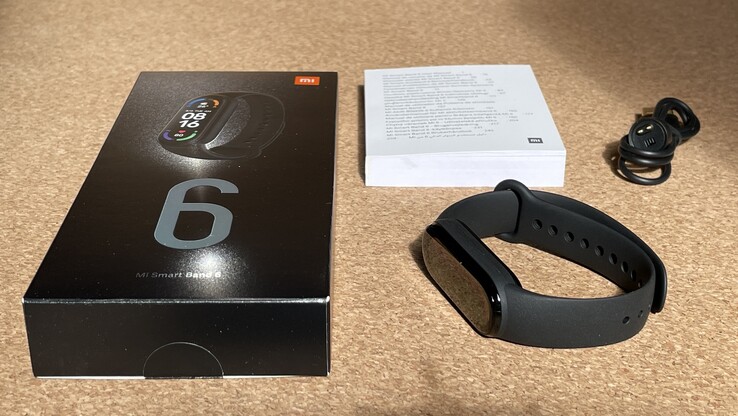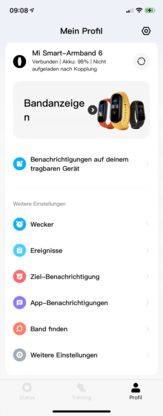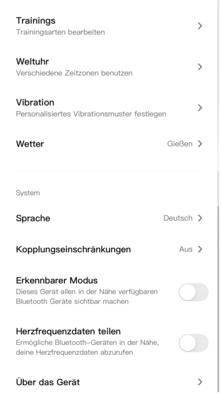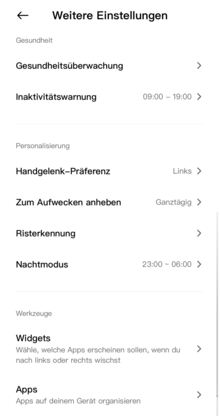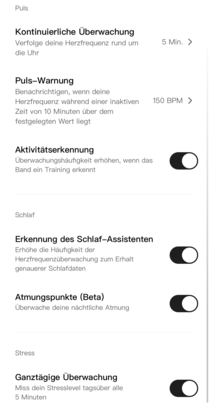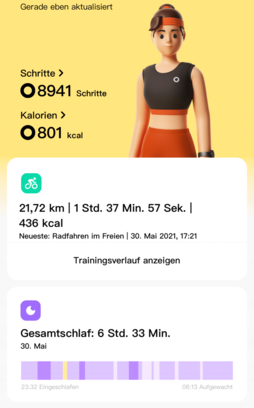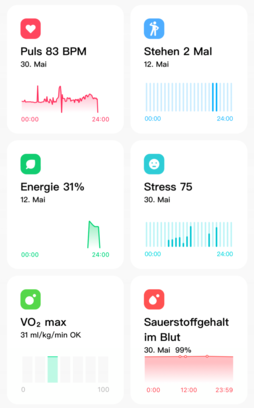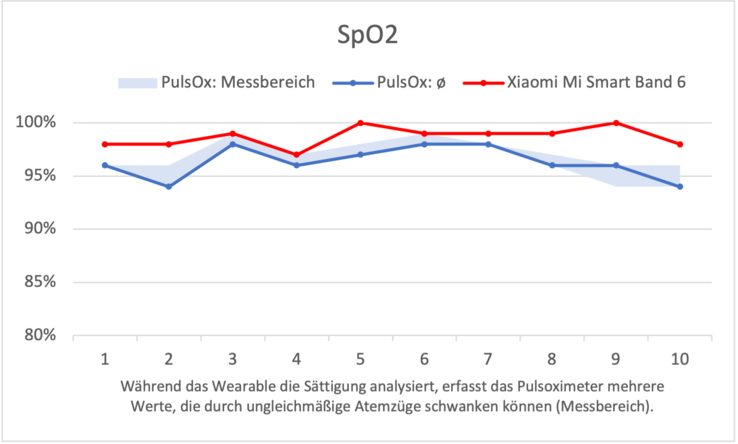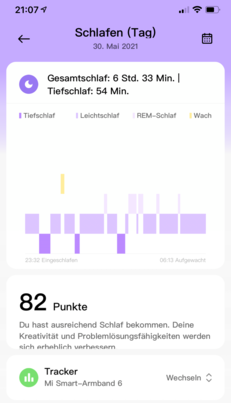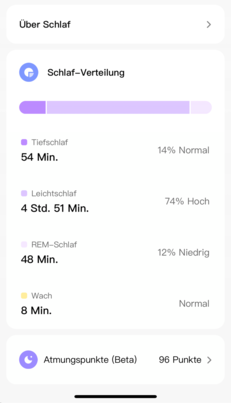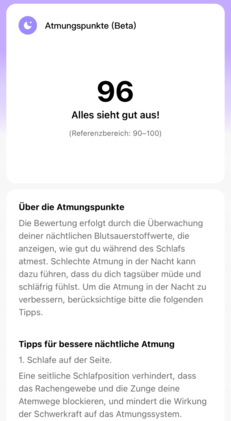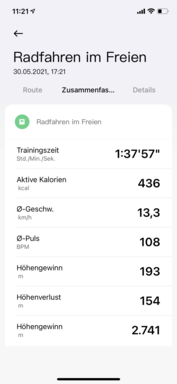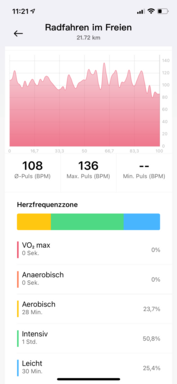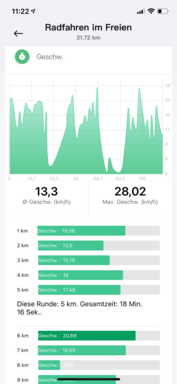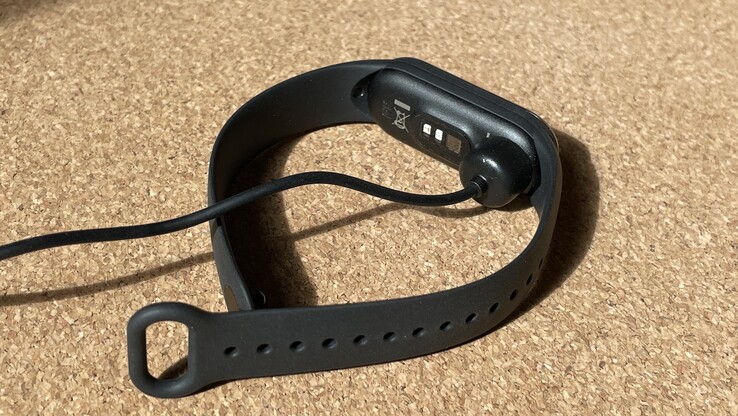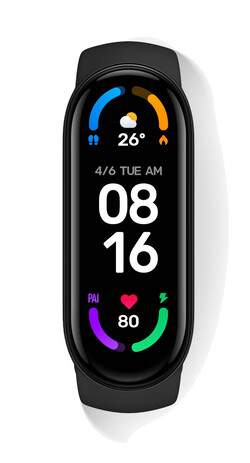Xiaomi Mi Smart Band 6 in review: Effective design improvement, the price fits
Case and features - More pixels than the Mi Band 5
At first glance, you can't see any difference to the predecessor. Including their small charging adapters, the present Xiaomi Mi Smart Band 6, its predecessor Mi Band 5 and the Amazfit Band 5 from Huami hardly differ from each other visually. Only the band is longer in the case of Huami, which allows a wrist circumference of 23.5 cm compared to 21.9 cm in the case of Xiaomi (~0.93 versus 0.86 inches).
However, there is a clear difference when you activate the displays of the three bands. Xiaomi says goodbye to the rigid rectangular screen and now also uses the upper and lower round ends of the tracker in the same casing size. The screen diagonal thus grows from 1.1 to 1.56 inches, the resolution from 126 x 294 px to 152 x 486 px.
The touch screen now covers the entire screen, and the soft key, which was below the display in the Mi Smart Band 5, has been removed. Xiaomi specifies the AMOLED's brightness at 450 nits. A sensor for the ambient light is missing; instead, it is regulated manually in five levels. Level 3 was sufficient indoors in the test, sometimes also level 2. The screen was legible from level 4 outdoors. Subjectively, level 4 did not seem glaring indoors either, so this remained the preferred setting in the test.
A tempered glass to protect the surface is also new, and the plastic casing is still water-resistant up to 5 ATM. The RAM size was 512 KB on the Xiaomi and Huami 5 bands. The requested memory sizes of the Band 6 were not available by the end of testing. We will add them when the manufacturer informs us.
Setup and operation - Multi-compatible
The iPhone and a Honor V20 each found our test device via both the Mi Fit app and the Xiaomi Wear app (the Xiaomi Wear Lite app on the iPhone). Mi Fit and Xiaomi Wear have different interfaces, but despite the term "Lite", the differences between the Xiaomi Wear app on the iPhone or Android smartphone are minor. Of course, the device settings change when you connect another wearable.
However, we found an important difference in the account linking on our test devices: On Android, only Mi Fit connected with Google Fit, while the Xiaomi Wear app did not. On iOS, both apps connected with Apple Health, and the Xiaomi Wear Lite app additionally connected with Strava. The continuation of the test was done with an iPhone 12 Pro and the Xiaomi Wear Lite app.
Among the options are individual vibration patterns for alarms, messages, incoming calls or emails, and an optional password protection that locks the band when you take it off. A night mode dims the screen in the evening hours. You can limit the do-not-disturb mode and the activation via gesture in terms of time.
The back function, which was previously assigned to the soft key under the display, is now taken over by a gesture - subjectively the only deterioration compared to before. If you are afraid that the display might be activated unintentionally, for example by special clothing materials, you can set it so that it does not activate when you touch it, but only when you swipe it from bottom to top.
The apps include a timer and a Pomodoro timer for concentrated work, weather information and a control for the smartphone player. The camera control worked with both the iPhone and the Honor V20 in the test. Almost all apps have a widget that can be accessed by swiping horizontally. All apps and widgets can be arranged individually and individual apps can be hidden. For the Band 6, the Xiaomi Wear and Mi Fit apps limited the number of widgets to 6. In contrast, we could activate10 widgets via Mi Fit on the Mi Band 5, as well as via the Zepp app for the Amazfit Band 5.
Telephony and notifications
The band displayed the corresponding icon for some messages, and it partially replaced emojis with block symbols. The band vibrates when a call arrives on the smartphone, unless it is deactivated in the settings. The vibration can be muted for the current call or the call can be rejected.
An update to firmware version 1.0.1.32 should make it possible to reply to messages. Although version 1.0.1.36 was installed on the test device, were were not able to get a connection to an iPhone nor an Honor V20 during the test period.
Health and Fitness - Inadequate for Conscientious Monitoring
The fitness tracker counts steps and calculates the calories burned from all activities in conjunction with the personal data. A dashboard shows all data in an overview and leads to further detailed pages. It is positive that the dashboard also shows the maximum oxygen uptake VO2 max, but this has to be viewed critically against the background of a not always reliable optical sensor. More about that in a moment.
Most activity and health data can also be read on the wrist. New compared to the predecessor Mi Smart Band 5 is the measurement of blood oxygen saturation. However, it is only done manually.
Heart rate, heart rhythm and blood oxygen saturation
For the test, we measure the saturation simultaneously in each case with a medically certified pulse oximeter. In the series of measurements, the Band 6 consistently estimates the saturation too high. The deviations are between 1 and 4 percentage points.
On the other hand, the fitness band measures the heart rate around the clock if desired. You determine the interval in the app's settings, where you can activate further options like a pulse warning. We also log 10 measurements here, checking the band's fit in each case to avoid external influences on the measurement. Nevertheless, there are two high deviations that cannot be explained.
In order to additionally assess how the sensor reacts to quick changes, for example during a workout, we compare the recording during an interval workout with that of Polar's H10 heart rate sensor. At the simultaneous start, the chest sensor counted 90 beats per minute, the Xiaomi tracker 68. The curve is subsequently weaker and even flips for a short moment in the 2nd run.
Sleep tracking
The Mi Band 6 does not display any sleep data itself. The sleep log of the Xiaomi Wear Lite app is comparatively poor. It does not show the heart rate, although increased heart rate monitoring was enabled specifically to obtain more accurate sleep data.
The sleep-in and wake-up times matched the date of the following recording. Beyond the logged short wake phase, however, there were three further interruptions in which presence was at least sufficient to look at a radio alarm clock for later comparison. The trackers usually record such short interruptions as well, but they are missing here.
Training recording
The Xiaomi Mi Smart Band 5 and the Huami Band 5 had 11 sports profiles installed. For the Band 6, Xiaomi now offers 30 profiles via the app, eleven of which can be transferred to the tracker. New profiles include basketball, volleyball and table tennis, dancing and HIIT.
During an outdoor workout without a smartphone, the Xiaomi band does not record the route, but like most modern sports trackers, it estimates the stride length based on the user's height, age and weight and determines the distance covered and the speed on this basis. This is too inaccurate for ambitious athletes. For beginners and recreational runners, however, it may be enough to motivate them. The quality of the estimate may be different for each person. In a short test, the kilometer (~3281 feet) signal initially came consistently after 1100m (~3609 feet). This is pretty good for an estimate. After the 3rd km, however, the Xiaomi tracker dropped out and ended up being quite significantly off with only 3.9 km instead of the actual 4.8 km (~2.4 instead of 3.0 miles).
Walking, running, cycling and the workout with the rowing machine or on the cross trainer are automatically detected by the sports band and then vibrate to remind the user to start recording if necessary. You have to activate the recognition first, also for energy reasons, and for each sport individually. If you have the smartphone with you, the Band 6 also records the route afterwards (when walking, running and cycling). The reminder during cycling occurred after about 10 minutes in the test. During a tour through surrounding places with several stops, the recording paused automatically when stopping. However, the second value for the altitude gain, which definitely does not represent an absolute altitude in the Hessian mountains, is unclear in the following log.
During most workouts, the Mi Smart Band 6 only displays the time, heart rate zone, and estimated calorie consumption as in the first of the following screens. The other screens show the display of those sports where we could find additional data.
Battery life
Xiaomi specifies up to 14 days runtime of the 125 mAh battery, which is not bigger than in the predecessor and Huami's Amazfit Band 5.
Several factors reduced the runtime in the test, including the higher display brightness and additionally enabled features like activity detection. In the health monitoring area, the following options were enabled: Sleep Assistant detection for more accurate sleep data, nighttime breathing monitoring, all-day stress level monitoring. In addition, there were several workout recordings with and without GPS. In this scenario, the battery can still reach 7 days and more.
Pros
Cons
Verdict - Recommendable, despite a significant additional price compared to Huami Band
The functions of the Xiaomi Mi Smart Band 6 are similar to those of the predecessor and the very similar Amazfit Band 5. The only thing that is really new is the larger display; and it is worth the additional price compared to the Mi Band 5, which still costs about 26 Euro and the 29 Euros (~$31.63 versus $35.28) for the Amazfit Band 5 because the new resolution not only provides more space for additional information on the watch face, but also improves the readability of the menus.
All three benefit from a high degree of personalization, especially for apps and widgets that can be arranged and hidden as desired. The Amazfit Band 5 supports for Amazon's voice assistant Alexa, which the Xiaomi bands lack.
For hobby sports and leisure, the Xiaomi Mi Smart Band 6 is a real recommendation.
Features like counting rope jumps or the number of moves during rowing are simply fun. By the way, the Band 5 can also do that, but it is still limited to a good third of the sports profiles - even with Huami.
Due to the weaknesses that at least our test device revealed when measuring heart rate and oxygen saturation, we do not recommend the Mi Smart Band 6 if someone is looking for a reliable monitor for vital signs. This also applies to those who are interested in parameters such as maximum heart rate or oxygen uptake after training. With this requirement, it is better to invest a bit more in a higher-quality tracker.
As a simple tracker and motivator - be it for sports or to move more - we recommend the Mi Smart Band 6 as well as the Band 6 from Honor or Huawei. For a few Euros more, the Honor Band 6 (from $59 on Amazon), for example, offers oxygen saturation at night automatically, the Huawei Band 6 (Amazon: from $90) even on request around the clock.
Price and availability
Xiaomi sets the RRP at 44.99 Euros on the global market. You can get the band online at Amazon for $60, among others.




